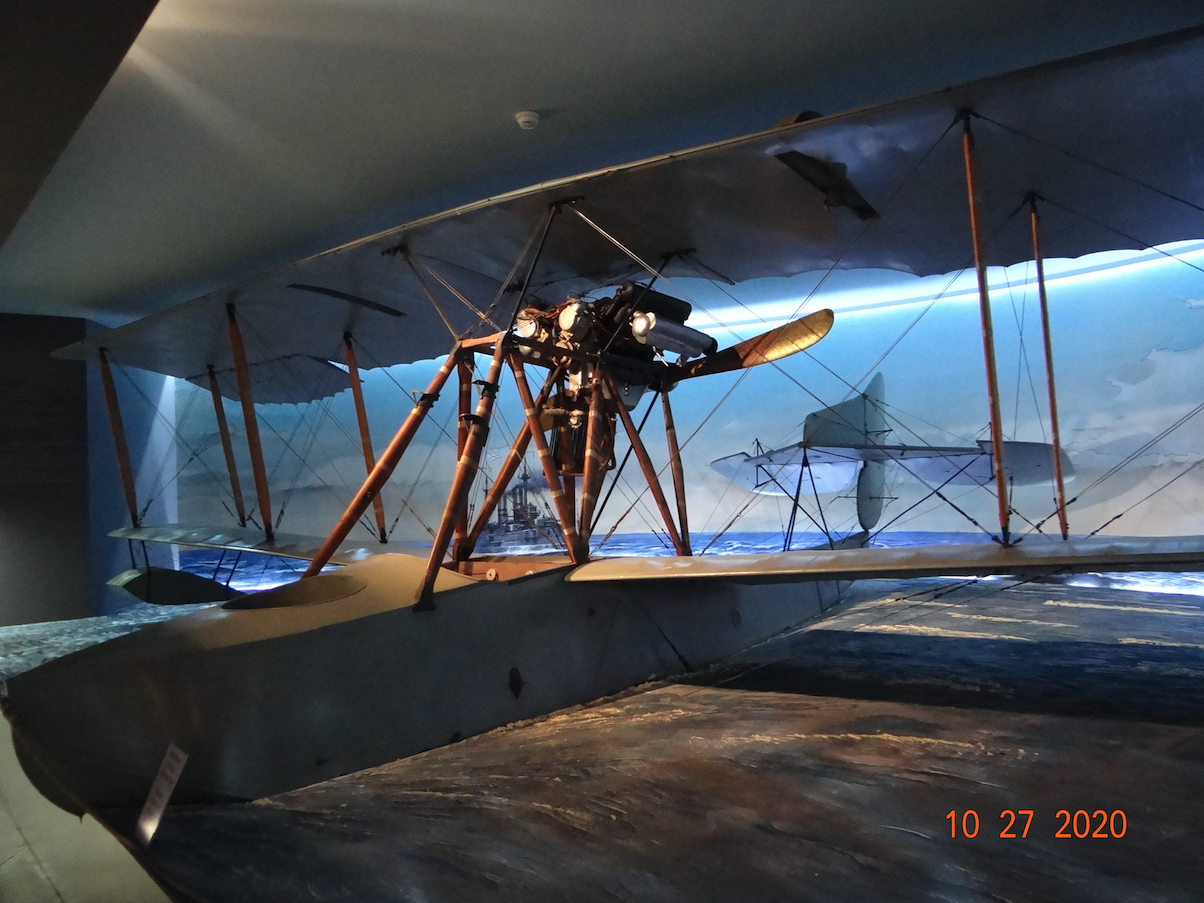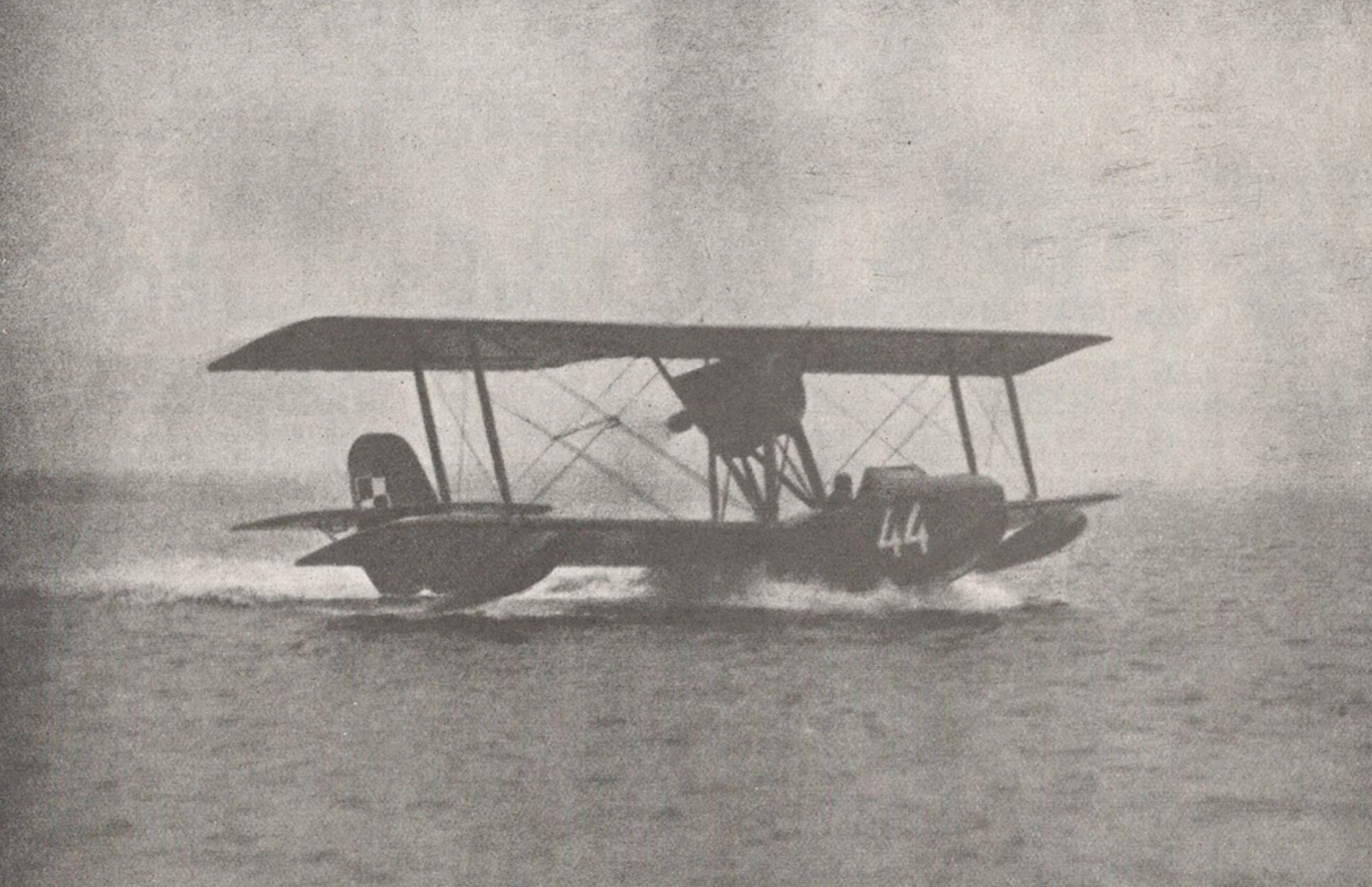Puck 2022-01-11
Marine Aviation Squadron in Puck.
After the Great World War, access to the sea was granted to the Restored Republic of Poland. On February 10, 1920, Poland took over a section of the sea coast which, together with the Hel Spit, was 140 km long, the economically neglected coast of the Baltic Sea. On February 10, 1920, General Józef Haller, together with the Minister of the Interior, Stanisław Wojciechowski, and the new administration of the Pomeranian Voivodeship, arrived in Puck, where he married Poland and the Baltic Sea, throwing a platinum ring into the sea. Since the sea was frozen, an ice hole had been dug earlier. The main point of the celebrations organized at that time was the thanksgiving mass. During the holy mass, the clergy consecrated the Polish flag, which was raised on a mast with the roar of 21 cannonballs, as a sign of the Polish Navy taking the watch over the Baltic Sea.


The next day (February 11, 1920), the development of the area of the former Prussian unit began. These were the barracks, the landing area, hangars, the hydrofoil basin and the way to roll them. Several heavily damaged seaplanes were also seized. The Naval Aviation Base was formed, headed by Capt. Wiktoryn Kaczyński, and the first order was issued on July 1, 1920.
In May 1919, the Sea Aviation Department was created at the Department of Maritime Affairs of the Ministry of Military Affairs. The head of the Naval Aviation Department was the naval lieutenant, pilot Karol Trzaska Druski (1894-1971). The first aviation unit of the Polish Navy was the Naval Aviation Base in Puck, which was established in July 1920. Captain Wiktoryn Kaczyński was appointed the commander of the unit.
The first plane of the base was the Friedrichshafen FF.33 seaplane rebuilt by Polish mechanics. The plane was a two-seater, single-engine land biplane, equipped with two floats. The plane was developed in 1914. The plane was painted and marked with red and white checkerboards. The first flight was made on July 15, 1920. The pilot was Andrzej Zubrzycki. July 15 became a celebration of the individual.
In August 1920, four more planes were purchased in Gdańsk: Friedrichshafen FF-33 E, Friedrichshafen FF-33 L, Friedrichshafen FF-49 B and Lubeck Travemunde LT F-4 (also on two floats). All these planes were brought to Puck by flight. They were used to train crews at the newly established Naval Aviation School and for patrol flights.
In October 1920, two more Hans Brandenburg NW and Sablating SF-5 aircraft were purchased. At the beginning of 1921, there were already 7 seaplanes in the state of the Naval Aviation Base. All planes were used. The poor technical condition of the aircraft was associated with a considerable risk during flights. Tragic accidents and the deaths of the pilots could not be avoided.
At the base in Puck there were also 4 typical land planes: the training Albatros B.II training aircraft, the Albatros D.V. fighter aircraft. and two DFW C.IV.
It should also be mentioned that in the period 1920-1927, the port in Puck was the main military port of the Polish Navy.
In 1921, the Naval Aviation Division was transformed into the Independent Naval Aviation Division. The head of the section was a naval lieutenant, Stanisław Gołębiewski. In November 1921, the Base in Puck was renamed the Naval Aviation subordinated to the Coastal Defense Command based in Puck. Its commander was captain Wacław Iwaszkiewicz. The operating unit, i.e. the Seaplane Squadron, was directly subordinate to the Fleet Command and Coastal Service.
In the summer of 1921, the Department of Maritime Affairs, through the Polish Purchasing Mission and private companies, purchased in Italy 7 training seaplanes FBA S-4 (from 1917) and 9 reconnaissance Nieuport Macchi M 9. All purchased planes were used. The Italians did not fulfill the contract because they did not send personnel for aircraft assembly and training. In the end, the Italians sent one pilot to Poland, which turned out to be incompetent. The planes were assembled for several months, which had a negative effect on their quality.
At the beginning of 1922, Naval Aviation had seven seaplanes and one land plane. The Naval Aviation School was established in Puck. Its commander was Ensign Adolf Stempowski.
On May 15, 1922, Naval Aviation was subordinated to the commander of the 2nd Aviation Regiment in Krakow, as the Detached Aviation and Intelligence Squadron, with a base in Puck. The commander was appointed Major Observer Ignacy Bielawski, and then Lieutenant Colonel Observer Antoni Leonkow.
In March 1923, the sub-unit was renamed the Maritime Aviation Division (MDL) and became independent. Organizationally, it was subordinated to the Aeronautics Department of the Ministry of Military Affairs. In terms of organization and training, MDL is still the Fleet Command and Coastal Service.
The celebration of the Maritime Aviation Day on August 15, 1922 ended tragically. The highlight of the program was to be a Lübeck Travemünde F4 bombing show. Two bombs exploded in the water of the Bay of Puck as planned, the third one exploded among civilian and military observers. Nine people died, many others were injured. The commander of the unit and the bombardier were punished by penalty from the army.
In the period 1924–1927, new machines were bought in France. These were 4 Liore et Olivier LeO H.13B flying boats, 7 Liore et Olivier LeO H.135B3 patrol amphibians. The planes are good and properly armed. In 1928, the Liore et Olivier LeOH plane from Puck made a propaganda flight around Poland, landing in Warsaw, Kraków and Poznań.
In 1926, the following were purchased: 4 CAMS-30E training-liaison boats, 8 Latham 43 HB-3 twin-engine bomber-patrol flying boats and 16 Schreck FBA-17H training-liaison amphibians. The Latham HB-3 flying boats were long-range and had the ability to land on the high seas. In the period 1924-1927, a total of about 40 French aircraft were purchased.
In March 1927, the command of the MDL was assumed by the naval commander, pilot Karol Trzaska Druski. At the same time, an additional seaplane platoon of the Pinsk Flotilla was formed, which operated in Polesie. Initially, the platoon had two FBA-17 HMT-2 amphibians. In 1929, the Naval Aviation Squadron was enlarged.
At the beginning of 30 years, the infrastructure of the Base in Puck needed to be modernized. There was no electric lighting for night flights; fires were made. Subsequent military inspections showed that the base in Puck did not have much combat value. From 1930, efforts were made to unify the equipment used in Puck and base it on domestic production. Initially, 4 Lublin R. VIII bis hydro and ter hydro biplanes and the more modern Lublin R. XIII biplane were purchased. In 1932 a prototype was made and 3 R-XIII bis / hydro versions were made, and by mid-1934 they were delivered to Puck. Another 10 of the R-XIII ter / hydro version were delivered with metal floats. A year later (1935), the third series of R-XIII G was handed over, in the amount of 6 planes, they differed in double-decker, metal adjustable propellers and other minor changes. 5 Bartel BM-5 training planes were also purchased. There were no torpedo planes in service. The tests of the prototype Lublin R-XX planes, as well as the LWS-5 and RWD-22 aircraft designs, did not meet the requirements. The Italian seaplane CANT Z.506 B was chosen. Six planes were purchased, but until the outbreak of the war, only one arrived in Poland, but it was unarmed.
The base in Puck was also to participate in an innovative initiative, because with the use of three-engine Junkers G-23 W, attempts were made to launch passenger flights on the Warsaw-Gdańsk-Malmö-Copenhagen route. The stopovers were to take place in Puck. Due to financial reasons, the program was abandoned.
On December 9, 1932, the Puck squadron was included in the Navy, and excluded from the Aeronautics Department of the Ministry of Military Affairs. The commander was appointed lieutenant commander Edward Szystkowski.
In 1935, seaplanes from the Base in Puck appeared in the frames of the film "Rhapsody of the Baltic", which was a hit of Polish pre-war cinematography.
In 1929, the Naval Aviation Squadron in Puck consisted of: School and Close Intelligence Squadron, Long Intelligence Squadron, Communication and Aerial Photography Platoon, Auxiliary-Administrative Platoon and the Seaplanes Platoon in Pinsk.
In 1934, the composition of the Naval Aviation Squadron was as follows: 1st Line Squadron (R-VIII bis and ter, R-XIII ter). 2nd Line Squadron (R-XIII ter, R-XIII G). IV Training Squadron (R-XIII bis, R-XIII ter and BM-5C planes). Staff Platoon (FBA-17 HMT-2, R-XII bis, PWS-5T2).
On September 1, 1939, the Naval Aviation Squadron bravely resisted the German army and fought until September 8, 1939, but that is a topic for another article.
Written by Karol Placha Hetman
